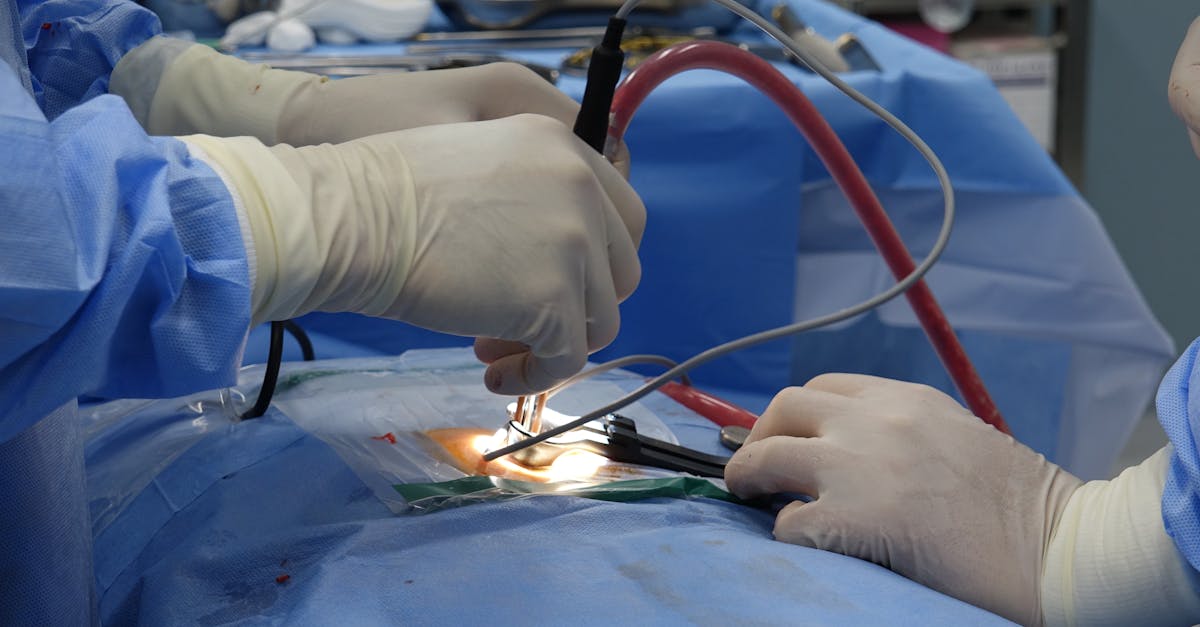Struggling with bad posture and discomfort? There’s a transformative solution.
In Short: Embrace mindful movement in your daily routine to improve your posture and overall well-being. This integral approach focuses on enhancing your physical alignment and core strength through effective posture exercises and innovative techniques. By incorporating practices such as yoga for posture and Pilates for posture, you can alleviate discomfort and move with greater ease and confidence. Pulse Align Clinics offer a unique and simplified method to support your journey toward better posture. Reclaim your health and wellness at Pulse Align Clinics. Book your appointment today!
Are you struggling with lower back pain and poor posture?
Embrace Mindful Motion: Integrate Pulse Align’s Expertise into Your Daily Routine to revolutionize your approach to posture correction. Studies show that 80% of adults experience some form of bad posture, leading to issues like lower back pain and neck pain. By incorporating mindful movement techniques, such as yoga for posture, Pilates for posture, and specific posture exercises, you can effectively improve posture and reduce the discomfort associated with conditions like kyphosis and lordosis. Pulse Align offers innovative solutions that not only focus on core strengthening but also emphasize ergonomics to create lasting improvements in your health.

In a fast-paced world, finding ways to enhance our well-being and promote posture improvement is crucial. Integrating neuromuscular recalibration through gentle, mindful movements can set the foundation for a life filled with comfort and vitality. Pulse Align is here to guide you in this journey of mindful movement, helping your body naturally restore harmony and balance.
Understanding Pulse Align’s Gentle Approach
At the core of Pulse Align’s philosophy is a commitment to help clients achieve optimal muscle tone and relieve discomfort through gentle stimulation. This method emphasizes the body’s inherent ability to return to a natural state of balance. By encouraging mindful movement, clients learn the importance of maintaining proper posture and awake to the sensations within their bodies as they engage in everyday activities.
Holistic Benefits of Mindful Movement
Pursuing a holistic lifestyle often means exploring approaches that align with the body’s innate capacity to heal and adjust. Pulse Align enables clients to embrace these natural processes, moving beyond mere symptom relief. As clients enhance their daily routines with mindful practices, they often experience an improvement in functional abilities and an overall sense of vitality.
Join the Pulse Align Community
Feedback from our clients highlights the positive changes that arise when integrating Pulse Align into their lives. Many have shared experiences of how they could improve posture naturally and reduce tensions throughout their muscular systems. Imagine transforming discomfort into ease and freedom as you engage with your surroundings.
Take the Next Step towards a Healthier You
Discover how Pulse Align can enhance your well-being. Find a Pulse Align clinic near you in cities like Montreal, La Prairie, Terrebonne, Chicoutimi, Charlesbourg, Saint-Jérôme, Châteauguay, Sainte-Marie, Les Escoumins, Granby, and Panama City. Schedule a consultation today and experience the difference that our integrative approach can make. Remember, Pulse Align complements your existing healthcare services, providing a supportive environment for achieving your wellness goals.
Medical Disclaimer
The information and advice provided on this site do not replace the advice, diagnosis, or treatment of a healthcare professional. Please note that the author of this article is neither a doctor nor a specialist in a medical specialty as defined by the Collège des médecins du Québec. Manual medicine, functional medicine, and sports medicine as described on this site exclude any medical treatment or diagnosis made by a doctor or medical specialist. Always consult your doctor for any medical questions. For more details, please read our complete Legal Notice.
Embrace Mindful Motion
- Morning Movement: Start your day with gentle stretches to awaken your body.
- Mindful Breathing: Incorporate brief moments of deep breathing throughout your day.
- Technology Break: Take breaks from screens to practice mindful movements.
- Walking Meditations: Transform your walks into a mindfulness practice.
- Ergonomic Awareness: Adjust your workspace to promote correct posture.
- Post-Workout Mindfulness: Conclude workouts with mindfulness exercises to cool down.
- Sensory Engagement: Focus on the sensations in your body during movements.
- Guided Sessions: Explore classes that combine mindfulness and movement.

In today’s fast-paced world, mindful movement is essential for enhancing neuromuscular health and improving posture. By Embracing Mindful Motion, you can leverage Pulse Align’s expertise to incorporate effective strategies into your daily activities. This article explores the benefits of mindful movement, posture improvement techniques, and ways to establish a holistic recalibration throughout your day.
The Importance of Mindful Movement
Mindful movement involves being consciously aware of your body’s motions and how they impact your posture. By incorporating mindful practices, such as yoga for posture and the Feldenkrais Method, you can cultivate better bodily awareness and coordination. This practice significantly influences your overall health by promoting symmetry in movement, which aligns with positive nervous system recalibration.
Improving Posture with Core Strengthening
One of the major concerns for many individuals is bad posture, often manifesting as conditions like forward head posture or rounded shoulders. To combat these issues, integrating core strengthening and targeted posture exercises into your routine is crucial. Exercises such as Pilates specifically designed for posture can strengthen key muscle groups to provide the necessary support for your spine.
Stretching Exercises for Balance and Relaxation
Another effective way to address posture problems, including swayback posture and anterior pelvic tilt, is through engaging in stretching exercises. Incorporating gentle stretches throughout your day can enhance flexibility and help to realign your body. For instance, regular stretching can relieve muscle tension that may contribute to conditions like kyphosis or lordosis.
Ergonomics and Mindful Sitting Habits
Practicing proper sitting posture while working at a desk is vital for maintaining spinal alignment. Consider setting up a standing desk or regularly changing your position to reduce strain. Mindful sitting involves being aware of your posture and adjusting your body accordingly, ensuring that your choice of ergonomics supports optimal alignment and movement.
Implementing Mindful Motion in Daily Activities
Incorporating mindful motion into your everyday tasks can significantly relieve the strain on your body. For example, instead of rushing through daily chores, take time to focus on your movements. As you tidy up or perform household tasks, pay attention to how your body feels and adjust your posture to maintain balance and harmony. This intentional approach can help in avoiding poor posture habits that lead to discomfort.
Taking Action Towards Holistic Health
Embracing mindful motion within your daily routine not only supports posture correction but also promotes overall well-being. By engaging in exercises specifically targeting your body’s needs, you contribute to a more balanced and energized life.
To learn more about personalized exercise plans and the benefits of integrating Pulse Align’s practices, consider taking the next step towards improving your neuromuscular health. Book a consultation with Pulse Align today to discover how you can transform your posture and embrace mindful movement effectively.
| Aspects | Insights |
|---|---|
| Mindful Movement | Incorporate gentle techniques to promote physical and mental wellness. |
| Core Strengthening | Utilize specific exercises to enhance stability and balance in daily activities. |
| Posture Improvement | Focus on alignment to support overall body function and comfort. |
| Breathing Techniques | Integrate breathing exercises to foster relaxation and reduce tension. |
| Daily Routines | Transform everyday activities into opportunities for mindful engagement. |
| Movement Variety | Explore diverse mindful movements that resonate with your body’s needs. |
| Awareness Practice | Enhance body awareness to better understand movement and comfort levels. |
| Body Connection | Develop a deeper connection with your body through intentional movement. |
| Relaxation Techniques | Incorporate practices that encourage serenity and emotional balance. |
| Holistic Approach | Adopt a comprehensive mindset that integrates various aspects of wellness. |

Embracing Wellness: Client Testimonials on Mindful Motion with Pulse Align
Clients across various regions including Sainte-Marie and Châteauguay have shared their journeys with Pulse Align‘s innovative approach to wellness. Many have reported feeling significant improvements in their overall health by effectively integrating mindful motion techniques into their daily routines. With a focus on facilitating the body’s natural ability to recalibrate and restore balance, these techniques resonate deeply with those seeking holistic recovery.
In Mont-Royal, one client expressed, “Since incorporating Pulse Align’s gentle movements into my morning routine, my body feels more aligned, and I experience fewer episodes of tightness. It’s a transformative experience that emphasizes the importance of listening to my body.” Their positive feedback echoes a common theme: many clients have been able to embrace a lifestyle of wellness and connectivity, improving their physical and mental well-being.
Residents of Deux-Montagnes have also found value in Pulse Align’s holistic strategies. As described by a satisfied client, “The methods provided by Pulse Align not only improve my posture but also enhance my mental focus throughout the day. The gentle guidance is exactly what I was searching for.” Such stories are a testament to how our approach promotes relaxation and vitality, allowing clients to engage fully in their daily lives.
Clients in areas like Chicoutimi and Saint-Jérôme have shared similar sentiments, noting that the incorporation of mindful movement has made their recovery journeys more effective. “I feel empowered to take charge of my health with the supportive tools provided by Pulse Align,” one client noted, illustrating how others have discovered strength and comfort through mindful practices.
At Pulse Align, we recognize the importance of working alongside healthcare teams to foster a supportive environment for clients and their families. Our commitment to enhancing well-being is evident through the numerous success stories shared by individuals from various locations, including Les Escoumins and Terrebonne. By integrating expert mindfulness techniques, our clients have been able to achieve remarkable improvements naturally.
For those residing in Panama City or surrounding areas, exploring the benefits of our mindful motion practice could be the key to unlocking a more balanced, fulfilling life. Many have found that embracing these techniques aligns perfectly with their wellness journeys, creating pathways to better health and well-being.
We invite you to learn more about our services and the supportive community we’ve built by visiting Our Clinics. Together, we work to enhance the healing process and promote overall vitality for all our clients.
Pulse Align clinics are dedicated to improving patients’ quality of life through innovative, integrative healthcare solutions. By combining cutting-edge technologies with personalized therapies, these clinics focus on addressing the root causes of various musculoskeletal issues, chronic pain, and other health concerns. Patients can expect a welcoming environment, competent guidance, and a comprehensive plan tailored to their unique needs, all designed to foster long-term well-being and a more active lifestyle.
Our Mission
At Pulse Align, our mission is to deliver evidence-based, client-centered treatments that address the underlying causes of pain and dysfunction. By integrating advanced techniques and technologies, we strive to empower each person to take control of their health, ensuring a high standard of care, lasting relief, and an improved quality of life.
Experience the transformative benefits of mindful movement with Pulse Align’s gentle stimulation. Enhance your physical and mental well-being by integrating effortless motion techniques into your daily routine. Discover how our innovative approach promotes relaxation, focus, and overall vitality.
Consider integrating mindful movement into your morning routine in a mindful way. This could include gentle stretches, yoga, or even a short walk outside. Pay attention to how your body feels as you move, notice the sensations in your muscles, and appreciate the fresh air if you’re outdoors.
With Mindful Motion, a practice designed to help navigate life with ease and comfort, individuals can befriend their bodies while empowering themselves. This program includes over 50 motions that are clinically proven to promote comfort and ease.
Pilates has also shown to greatly enhance balance and spine health. By integrating techniques tailored for balance, clients can achieve noticeable improvements in their overall well-being and physical alignment.
Pulse Align’s holistic strategies emphasize the importance of integrating mindful movement and ergonomic practices into your daily routine, creating lasting improvements in your posture and overall wellness. Incorporating specific stretching and posture exercises can significantly enhance not only your posture but also your quality of life.
Learn more about his approach and available services at www.pulsealign.com and find a location near you here: https://pulsealign.com/our-locations/.
Enhance Your Healing with TAGMED’s Spinal Decompression Technology
TAGMED offers an advanced approach to spinal decompression therapy, a non-surgical solution designed specifically to address moderate-to-severe disc issues. This innovative therapy is particularly beneficial for patients suffering from conditions such as herniated discs, bulging discs, or spinal stenosis. By gently reducing pressure on affected discs and nerves, our specialized technique enhances mobility, alleviates pain, and supports your body’s natural healing process. If you’ve reached a plateau with other treatments, discover how TAGMED’s evidence-based decompression therapy can help you resume an active and comfortable life.
Have you tried conventional treatments and still struggle with persistent back pain due to a severe disc condition?
Mechanism of Action
TAGMED’s neurovertebral decompression applies a controlled, progressive traction force to the spine. This method effectively increases space between vertebrae, thereby reducing pressure on intervertebral discs and nerve roots. As a result, it promotes better fluid circulation in the targeted area. This unique process helps in lowering inflammation and relieving pain, making it a reliable, non-invasive solution for individuals suffering from chronic back issues. Whether dealing with facet syndrome or degenerative disc disease, this therapy targets the root causes of discomfort.
Specific Benefits
The non-invasive nature of TAGMED’s spinal decompression therapy effectively alleviates chronic pain and symptoms linked to conditions such as herniated discs or foraminal stenosis. The technique focuses on reducing pressure on nerve structures and optimizing fluid circulation around the discs. These factors help speed up recovery, enabling a wider variety of patients to enhance their quality of life. Patients have reported significant relief from conditions like sciatica, allowing them to engage in daily activities without persistent discomfort.
Comparison with Other Treatments
Unlike pain medications, corticosteroid injections, or surgical options, TAGMED’s neurovertebral decompression technology provides advantages that make it a preferable choice for many. This method avoids invasive interventions and minimizes medication-related risks while promoting a potentially faster path to recovery. Many patients find that they can achieve lasting improvements without the complications that often accompany traditional physiotherapy.
Case Studies or Testimonials
Real-world testimonials underscore the effectiveness of TAGMED’s neurovertebral decompression therapy. Patients have shared transformative experiences, including lasting pain relief and quicker resumption of daily activities. Many have noted a reduced dependence on pharmaceuticals, highlighting the impactful and practical advantages of TAGMED’s therapeutic approach. These firsthand accounts serve as compelling evidence for those seeking safer, evidence-based alternatives.
Embrace Mindful Motion: Integrate Pulse Align’s Expertise into Your Daily Routine
By adopting the principles of mindful movement, you can reap significant benefits in your daily life. Pulse Align emphasizes the importance of improved posture, reduced discomfort, increased mobility, and overall enhanced well-being. The gentle, non-invasive strategies employed at Pulse Align empower clients to reconnect with their bodies, fostering a sense of peace and balance.
Clients have shared their positive experiences with Pulse Align, expressing gratitude for the supportive environment and the impactful results they have achieved. Through a focus on holistic health and natural pain relief, many have discovered new levels of vitality and comfort in their everyday movements.
Take the next step towards a healthier life by exploring the options available at Pulse Align. Discover the Pulse Align difference today and embark on your journey toward a more balanced and harmonious self. Schedule your consultation now and begin your path to wellness, where your body’s natural healing abilities can flourish.

Do you suffer from a chronic condition that responds little or not at all to conservative treatments?
Pulse Align offers an innovative, non-invasive method designed to help restore your body’s natural balance and posture through gentle, imperceptible pulses. This innovative therapy can promote the natural recalibration of muscle tone, potentially leading to a noticeable reduction in muscle and joint tension. As part of a holistic wellness approach, Pulse Align aims to support overall well-being by fostering a more functional and balanced body.
Unlike traditional therapies that focus on discomfort or specific conditions, Pulse Align emphasizes the body’s intrinsic ability to recalibrate itself. This unique methodology often results in remarkable improvements in comfort and postural alignment without direct intervention. Many of our clients find that, in embracing this integrated approach, they experience greater ease in their daily activities, allowing them to thrive without the constraints of tension or imbalance.
The personalized nature of Pulse Align’s services is another hallmark of our approach. Clients who have engaged with our methods have shared their positive experiences, noting improvements in overall wellness and reductions in discomfort associated with their daily routines. The testimonials reflect a newfound sense of balance and strength that permeates multiple aspects of their lives. From families to individuals seeking to enhance their wellness, its effects are felt far and wide, encompassing a wide demographic, including children and pregnant women.
We invite you to explore the benefits of Pulse Align and discover how it can become a valuable part of your wellness journey. With locations in cities such as La Prairie, Mont-Royal, Terrebonne, and many more, our team is ready to assist you, whether for yourself or your family. By visiting our website, you can find local clinics, learn more about what we offer, and book a consultation tailored to your unique needs. It’s important to note that while Pulse Align complements your overall wellness, it is intended to work alongside, and not replace, any ongoing healthcare services you may currently receive.
Frequently Asked Questions
Posture Imbalance, body misalignment
Can poor posture cause jaw pain?
Yes, improper head and neck alignment may create tension in the jaw, leading to pain or TMJ issues.
Are back strengthening exercises alone enough?
No, it’s important to also strengthen the abdominals, hips, shoulders, and legs to maintain overall muscle balance.
Do morning stretches help?
Yes, gentle morning stretches relax muscles, prepare the body for the day, and help maintain better posture.
How often should I do postural exercises?
Ideally 3 to 5 times a week, depending on the program, for long-lasting improvements.
Can I use a posture-correcting belt?
A posture belt can provide temporary support, but addressing the root causes and strengthening muscles is key for lasting results.
Can postural imbalance cause joint pain?
Yes, poor alignment places uneven stress on joints, which can lead to inflammation, stiffness, and joint pain.
Are proprioception exercises useful?
Yes, they help improve body awareness, balance, and coordination, which promote better posture.
Is strengthening the deep muscles crucial?
Yes, deep stabilizing muscles of the spine are vital for lasting alignment and a healthy posture.
Do sit-stand desks help reduce imbalance?
Yes, alternating between sitting and standing reduces static tension and supports better overall alignment.
What are common causes of postural imbalance?
Causes include poor prolonged posture, a sedentary lifestyle, injuries, muscular or skeletal asymmetries, and carrying inappropriate loads.
Adam Blanc understands that shoulder pain can do more than slow you down—it can impact your entire quality of life. As a Shoulder Pain Awareness Advocate at Pulse Align, he’s dedicated to showing readers that genuine relief is not just possible, but within reach. Drawing on the latest research, Adam combines expert insights with compassionate guidance, inspiring people to move toward greater comfort and mobility. His approach is about more than just managing symptoms; it’s about empowering individuals to rediscover their strength and embrace every moment, free from the constraints of pain.
Medical Disclaimer
The information and advice provided on this site do not replace the advice, diagnosis, or treatment of a healthcare professional. Please note that the author of this article is neither a doctor nor a specialist in a medical specialty as defined by the Collège des médecins du Québec. Manual medicine, functional medicine, and sports medicine as described on this site exclude any medical treatment or diagnosis made by a doctor or medical specialist. Always consult your doctor for any medical questions. For more details, please read our complete Legal Notice.




